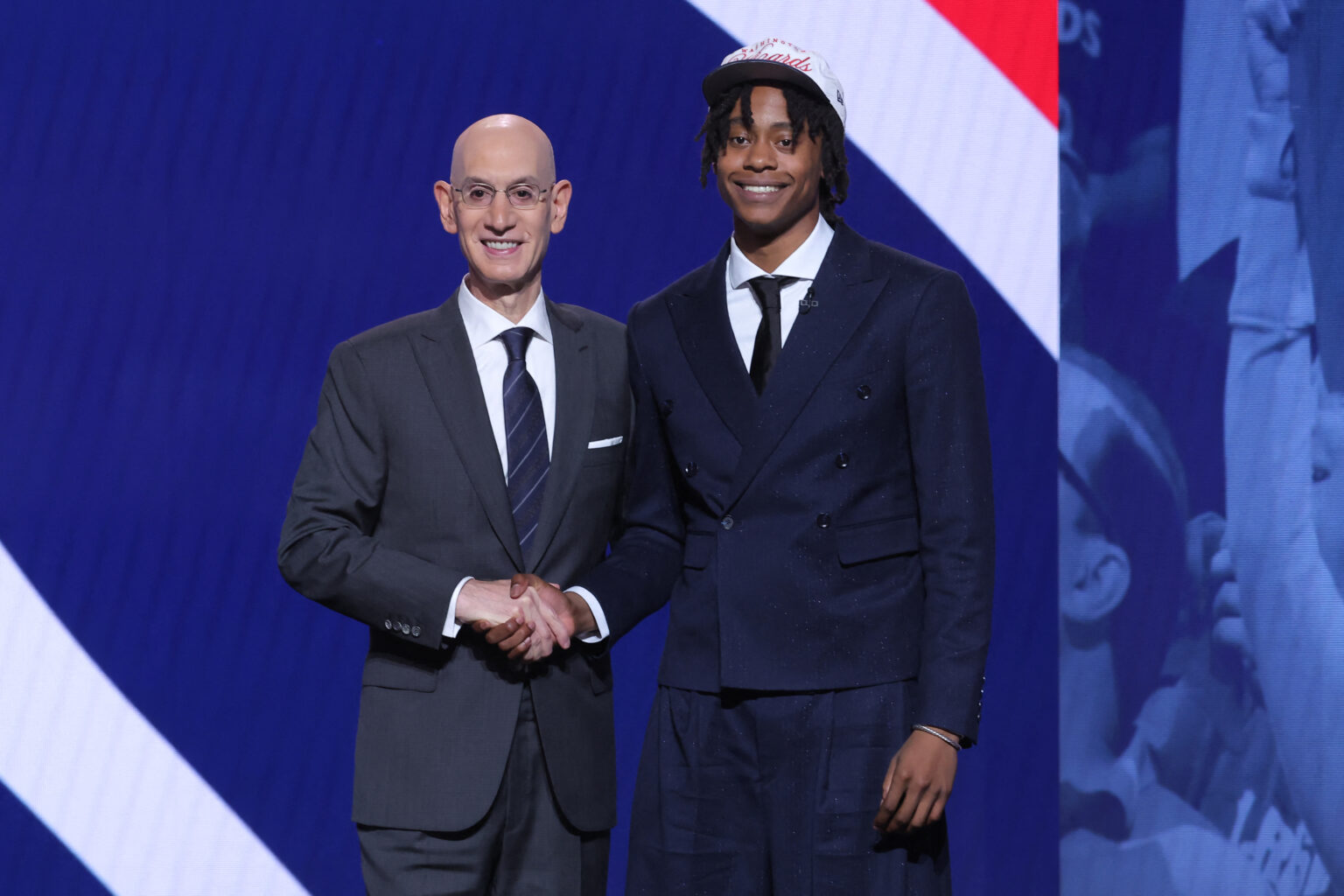Washington Wizards Make Strategic Draft Moves with a Focus on Shooting and Versatility
In a significant move during the first round of the NBA draft, the Washington Wizards selected Texas standout Tre Johnson with the sixth overall pick. This decision marks a strategic effort by the franchise to bolster its offensive capabilities by adding a promising sharpshooter who could evolve into a central figure in their game plan.
Tre Johnson: A Promising Two-Way Guard with Elite Shooting Potential
At just 19 years old, Johnson possesses a notable combination of height (6-foot-4¾) and wingspan (6-10¼ inches), enabling him to excel at both guard positions. His high release point and natural shooting mechanics make his three-point shot particularly dangerous. Johnson demonstrated his scoring prowess during his single college season at Texas, where he averaged nearly 20 points per game and shot an impressive 39.7% from beyond the arc. His performance earned him the SEC Freshman of the Year accolade and a spot on the second-team All-SEC team.
Johnson’s shooting versatility-whether off the dribble, catching and shooting, or coming off screens-was a key factor in the Wizards’ interest. His ability to stretch defenses is especially valuable given the team’s struggles with three-point shooting last season, where they ranked second-worst league-wide in three-point percentage.
Trade Strategies and Draft Capital
Alongside their first-round pick, the Wizards held the 18th selection but opted to trade it to the Utah Jazz in exchange for the rights to Illinois wing Will Riley, who was selected 21st overall. This move also secured Washington a second-round pick in Thursday’s draft (No. 43 overall) and future selections in 2031 and 2032, according to sources familiar with the negotiations. ESPN was the first to report the details of this trade.
Assessing Johnson’s Fit and Future Potential
Johnson’s shooting ability was a primary reason for his selection, especially considering the Wizards’ need to improve their perimeter accuracy. General Manager Will Dawkins highlighted Johnson’s shooting skills, stating, “His ability to shoot off the dribble and catch-and-shoot situations is remarkable for his size. If he’s not the best shooter in the draft, he’s certainly among the top.”
His offensive skill set offers hope that he could develop into a primary scoring threat, a role the Wizards have yet to establish through their recent drafts under Dawkins. Johnson expressed confidence in his potential to contribute as a floor spacer and playmaker, saying, “I aim to help create space for my teammates and make the game easier for them. I also want to be a playmaker who can get others involved.”
Areas for Development and the Road Ahead
While Johnson’s shooting is his standout trait, he will need to refine his game around the rim and improve his playmaking abilities. His college assist average was modest at 2.7 per game, indicating room for growth in distributing the ball. Additionally, enhancing his defensive skills will be crucial for his overall development.
During his meeting with Wizards executives, Johnson revealed that Dawkins showed him footage of moments when he appeared to take plays off. “That’s not the player I want to be,” Johnson admitted. “I appreciated the feedback; it pushed me to improve.” Dawkins joked that he initially had to convince Johnson to keep his “house secrets” during their interaction, emphasizing the importance of honesty and growth in the evaluation process.
Building a Young Core of Guards and Wing Players
Johnson joins a burgeoning group of young guards, including 2024 first-round picks Bub Carrington and AJ Johnson. His size and shooting ability should allow him to complement either of these players or fit alongside newly acquired guard CJ McCollum, who was brought in from the New Orleans Pelicans as part of the Jordan Poole trade. The Poole deal, pending official confirmation in early July, opened the door for the Wizards to select a guard with their first-round picks.
Will Riley: A Versatile Wing Prospect with Untapped Potential
Riley, also 19, stands 6-8 with a slightly longer wingspan, making him an intriguing addition for the Wizards’ wing rotation. The Big Ten sixth man of the year averaged 12.6 points and 4.1 rebounds per game, showcasing a fluid offensive game that hints at future versatility. However, at just 185.6 pounds, he will need to add strength to compete at the NBA level.
Riley expressed confidence in his skill set, stating, “Coaches appreciate my versatility and shooting ability. They also value my basketball IQ and guard skills.”
Future Outlook and Potential Role
Riley’s inclusion adds depth to a position that could see changes soon. With Khris Middleton on an expiring contract, and players like Corey Kispert and Justin Champagnie potentially facing trades or non-guaranteed deals, the roster is in flux. The Wizards have also recently traded forward Saddiq Bey as part of the Poole deal. Young prospects like Kyshawn George and Bilal Coulibaly will serve as benchmarks for Riley’s development.
Will Dawkins emphasized that Riley’s growth trajectory is promising, noting, “He’s still developing, but he’s a hard worker who can make plays and defend. We’re excited to see how he performs in Summer League, especially on the defensive end.”

